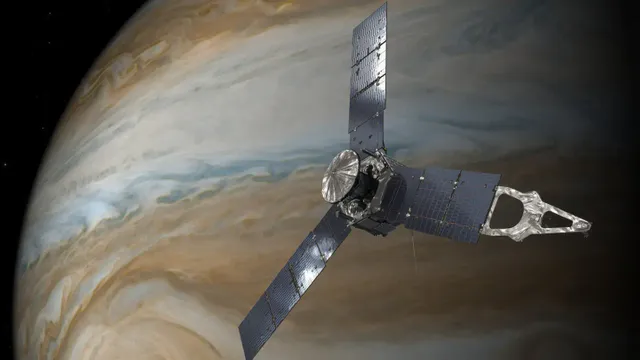NASA's Juno clicks first image of Jupiter's biggest moon
NASA's Juno shuttle passed Jupiter's biggest moon called Ganymede on June 7 and not missing the event it snapped the divine body while it was half lit because of daylight.

Juno snapped Ganymede from a distance of 1,038 kilometres, which is nearest by any rocket till date.
In the delivered two pictures, Ganymede's pit can be seen and it shows up actually like earth's moon in various shade.
NASA clarified that the current sunlit picture delivered have been caught utilizing JunoCam with a "green channel," the rocket's apparent light imager. When Juno transfers home pictures it shot utilizing the Red and Blue channels, NASA said imaging specialists will actually want to bits together a shading representation of the water-ice-encrusted moon.
The photos have a goal of around one kilometre for every pixel.
The caught pictures by Juno are significant on the grounds that this is the first run through in most recent 20 years when a shuttle has gone so near the Ganymede moon.
"This is the nearest any space apparatus has resulted in these present circumstances mammoth moon in an age," said Juno Principal Investigator Scott Bolton of the Southwest Research Institute in San Antonio. "We will take as much time as is needed before we reach any logical determinations, yet up to that point we can basically wonder about this heavenly marvel."
Ganymede was found by prestigious space expert Galileo Galilei in 1610 alongside the planet's three next-greatest moons.
The fascinating truth is that it is the biggest moon till date in our nearby planetary group.
NASA's sun based controlled Juno space apparatus was dispatched 10 years prior and has been circling Jupiter for a very long time at this point.